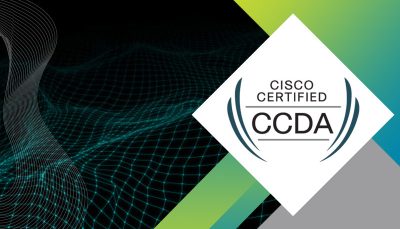
شرح دوره Business Intelligence
دوره آموزش Business Intelligence (BI) بهطور معمول به توضیح مفاهیم پایهای هوش تجاری، اهمیت آن در تصمیمگیریهای کسبوکار و نحوه استفاده از دادهها برای بهبود عملکرد سازمانها میپردازد.
هوش تجاری یا Business Intelligence به مجموعهای از فناوریها و فرايندهايی گفته میشود که به فرد در سازمان، اجازه دستیابی و آنالیز داده را فراهم میکند. این گونه میتوان گفت که هوش تجاری کمک میکند به وسیله منبعهای دادههای سازمانی جهت ایجاد یک شمای بزرگ از کسب کار اقدام کنیم. در نتیجه مدیران نگاهی صحیح تر از کسب و کار خود را داشته باشند.
نگاه اشتباه این است که هوش تجاری را فقط یک نرم افزار بدانیم، در صورتیکه هوش تجاری فراتر از آن است. با ایجاد این بستر هوش تجاری در مجموعه یا شرکت، نگاه مدیران نیز وسیعتر خواهد شد و نوع بینش آنها به رقیبان، مشتریها، وضعیت تولید، فروش و… متفاوت خواهد شد و چیزهایی را از امروز می ببنند که در گذشته به آن توجهی نمیکردند.
طی سالهای گذشته شرکتها علاقهمند بودند که فقط اطلاعات را به وسیله سیستم مالی، تولید، فروش و… به دست بیاورند. بعد از جمعآوری اطلاعات این سوال به وجود میآید که دلیل جمعآوری این اطلاعات چه چیزی است؟ چطور باید از این اطلاعات و دادهها به شوه صحیح استفاده کرد؟
هوش تجاری در واقع تولید داده نمینماید و فقط از دادههای موجود استفاده مینماید پس اگر سازمانی دادههای خوبی را جمعآوری نکند امکان توسعه هوش تجاری قطعا به مشکل بر میخورد. ولی میشود با جمعآوری اطلاعات مورد نظر، از امروز بعد نیازها را برآورده کرد.
پس در نتیجه با استقرار هوش تجاری و درک صحیح مدیران از داده و اطلاعات موجود، زیر پایه و معماری هوش تجاری آغاز میشد. قطعا همراه بودن مدیران میتواند ضامن موفقیت این پروژهها باشد.
پس از استقرار و پیادهسازی هوش تجاری شفافسازی اولین آورده آن است که دیگر کسی نمیتواند با توجیههای غیرواقعی، عملکرد ضعیف خود را اثبات کند. پس شاید برخی با این روش مخالف باشند و همراه نشوند که باید آنها نیز در قالب سازمان قرار گیرند و مدیران از این به بعد میتواند داشبوردهای خود را به زمان و دقیق نظاره نمایند و نیازی به تولید گزارشات در لحظه برای مدیر ارشد نمیباشد زیرا همه به تحلیلهای مورد نیاز خود دسترسی دارند.
پیشنیاز دوره
ندارد
مخاطبین دوره Business Intelligence
- کارشناسان و مدیران فناوری اطلاعات
مزایای دوره
- ارائه مدرک معتبر
- برگزاری دورهها بصورت کاملا عملی
- استفاده از لابراتور مجهز
- استفاده از برترین اساتید داخلی و با مدرک بینالمللی
- با توجه به حضور گروه دوران در بیش از 1000 پروژه سازمانی، امکان معرفی دانشجویان دوره به بازار کار مرتبط به دورهها
- تخفیف جهت حضور در دورههای بعدی
- دريافت مدرک بينالمللی مرتبط
سرفصل دوره Business Intelligence
- Introduction
- Roadmap of project tasks
- Program/Project Planning and Management
- Readiness factors
- Risk assessment and mitigation plans
- Scoping and business justification
- Team roles and responsibilities
- Project plan development and maintenance
- Program management
- Business Requirements Definition
- Program versus project requirements preparation
- Requirements gathering participants
- Techniques for gathering requirements and handling obstacles
- Program/project requirements deliverables
- Requirements prioritization
- Dimensional Modeling
- Role of dimensional modeling in Project, Corporate Information Factory (CIF) and hybrid architectures
- Fact and dimension table characteristics
- 4-step process for designing dimensional models
- Transaction fact tables
- Fact table granularity
- DE Normalizing dimension table hierarchies
- Degenerate dimensions
- Date and time-of-day dimension considerations
- Dealing with nulls
- Surrogate key for dimensions
- Star versus snowflake schemas
- Centipede fact tables with too many dimensions
- Fact-less fact tables
- Additive, semi-additive, and non-additive facts
- Workshop: Converting requirements and source data realities into dimensional model
- Consolidated fact tables
- Dimension table role-playing
- Allocated facts at different levels of detail
- Complications with operational header/line data
- Multiple currencies
- Junk dimensions for miscellaneous transaction indicators
- Periodic and accumulating snapshot fact tables
- Implications of business processes on data architecture
- Enterprise Data Warehouse Bus Architecture and matrix for master data and integration
- Conformed dimensions – identical and shrunken roll-ups
- Exercise: Translate business requirements into DW Bus Matrix
- Slowly changing dimensions – type 1, 2, 3 and hybrid techniques for current and point-in-time attribute values
- Mini-dimensions for large, rapidly changing dimensions
- Exercise: Design review to identify common dimensional modeling flaws
- Design review dos and don’ts and mistakes to avoid
- Dimensional modeling process, tasks, and deliverables
- Exercise: Design enhancements to embellish existing design
- Mature DW/BI System Check-ups
- Symptoms of sponsorship, data, infrastructure, and business acceptance disorders
- Prescribed treatment plans for common maturity problems
- Technical Architecture Design
- Architecture concepts
- Topology options – independent data marts, enterprise data warehouse, and conformed data warehouse
- Common components and functionality
- ETL system
- Exercise: Processing slowing changing dimensions type 2
- Presentation servers (RDBMS/OLAP)
- Real time options – direct to source, ODS, and real time layer
- BI application types and services
- Creating the architecture plan
- Exercise: Translating requirements into architecture implications
- Product Selection and System Setup
- Architecture-based evaluation approach and matrices
- Infrastructure considerations
- Metadata management
- Securing the system
- Physical Database Design
- Standards and naming conventions
- Physical model development
- Initial aggregation, indexing and storage plans
- Column-oriented database alternative
- Usage monitoring
- Extract, Transformation and Load
- Design the ETL system
- Determine design patterns and implement key subsystems
- Quality assurance and data validation system
- Warehouse operations system
- ETL development workflow
- Create high-level and detailed ETL schematics
- Extract to create, filter and transfer source data
- Cleaning and conforming dimensions and facts
- ETL development workflow continued
- Preparing and delivering dimensions and facts
- Data integration and master data management
- Dealing with data quality issues
- Aggregate management
- Load cycle management
- Exercise: “High-level ETL schematic” case study
- BI Applications
- BI application types (ad hoc, standard reporting, analytic applications, dashboards) and audiences
- Specification of templates, applications and navigation framework
- Development of applications and BI portal
- DW/BI System Deployment and Support
- System deployment
- Communication and documentation
- Training and support
- On-going user, data and system maintenance
- DW/BI System Growth
- Planning for growth
دوران آکادمی زیر مجموعه گروه دوران، مجری برگزاری دوره Business Intelligence در قالب آموزش شبکه به صورت آموزش آنلاین و حضوری با بهره گیری از لابراتور آنلاین اختصاصی بهمراه گواهی معتبر ارائه میشود.
درخواست مشاوره
برای کسب اطلاعات بیشتر درباره این دوره درخواست مشاوره خود را ارسال کنید و یا با ما در تماس باشید.
درخواست مشاورهدوره های مرتبط
دوره آموزش Cisco CCDA
دوره Cisco CCDA (Cisco Certified Design Associate) به آموزش اصول طراحی شبکه میپردازد و برای افرادی طراحی شده که میخواهند مهارتهای خود را در زمینه طراحی زیرساختهای شبکه تقویت کنند.
دوره آموزش Cisco QOS
دوره آموزش Cisco Quality of Service (QoS) به شما کمک میکند تا مفاهیم و تکنیکهای لازم برای مدیریت و بهینهسازی ترافیک شبکه را یاد بگیرید.
دوره آموزش Cisco CCNP Route
دوره آموزش Cisco CCNP Route به شما مهارتهای لازم برای طراحی، پیادهسازی و عیبیابی پروتکلهای مسیریابی در شبکههای پیچیده را آموزش میدهد.
دوره آموزش Cisco IWAN
دوره آموزش Cisco Intelligent WAN (IWAN) به شما کمک میکند تا با فناوریهای WAN هوشمند Cisco آشنا شوید و مهارتهای لازم برای طراحی، پیادهسازی و مدیریت شبکههای WAN را کسب کنید.




